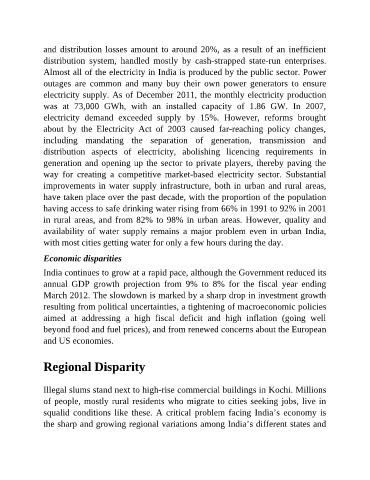Page 463 - SSB Interview: The Complete Guide, Second Edition
P. 463
and distribution losses amount to around 20%, as a result of an inefficient
distribution system, handled mostly by cash-strapped state-run enterprises.
Almost all of the electricity in India is produced by the public sector. Power
outages are common and many buy their own power generators to ensure
electricity supply. As of December 2011, the monthly electricity production
was at 73,000 GWh, with an installed capacity of 1.86 GW. In 2007,
electricity demand exceeded supply by 15%. However, reforms brought
about by the Electricity Act of 2003 caused far-reaching policy changes,
including mandating the separation of generation, transmission and
distribution aspects of electricity, abolishing licencing requirements in
generation and opening up the sector to private players, thereby paving the
way for creating a competitive market-based electricity sector. Substantial
improvements in water supply infrastructure, both in urban and rural areas,
have taken place over the past decade, with the proportion of the population
having access to safe drinking water rising from 66% in 1991 to 92% in 2001
in rural areas, and from 82% to 98% in urban areas. However, quality and
availability of water supply remains a major problem even in urban India,
with most cities getting water for only a few hours during the day.
Economic disparities
India continues to grow at a rapid pace, although the Government reduced its
annual GDP growth projection from 9% to 8% for the fiscal year ending
March 2012. The slowdown is marked by a sharp drop in investment growth
resulting from political uncertainties, a tightening of macroeconomic policies
aimed at addressing a high fiscal deficit and high inflation (going well
beyond food and fuel prices), and from renewed concerns about the European
and US economies.
Regional Disparity
Illegal slums stand next to high-rise commercial buildings in Kochi. Millions
of people, mostly rural residents who migrate to cities seeking jobs, live in
squalid conditions like these. A critical problem facing India’s economy is
the sharp and growing regional variations among India’s different states and

